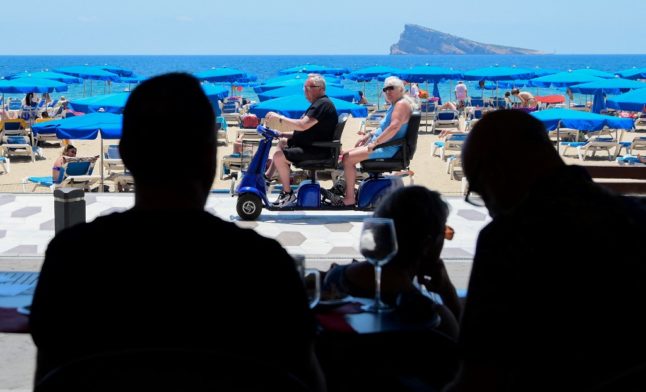SLEEP
Hotel de Rome
Rocco Forte’s Hotel de Rome opened in October 2006 in a blaze of publicity. Overlooking historical Bebelplatz (the site of the Nazi book-burnings) just off Unter den Linden, the hotel is housed in a 19th-century building that until the end of the war was the head office of Dresdner Bank. Overhauled by designer Tommaso Ziffer and architects Aukett and Heese the hotel has 146 rooms, including an immense presidential suite with a full-length terrace. A great deal of the history of the hotel has been preserved, right down to grenade scars from the war. The rooms, as you’d expect from any Rocco Forte establishment, are both sumptuous and spacious – high ceilings, plush furnishings and walk-in showers are common to all. Parioli, the hotel restaurant, serves Italian and Mediterranean fare and looks out onto a large terrace that offers al fresco dining during the summer. You can also take afternoon tea in the impressive Opera Court. The Spa de Rome was formerly the vault of the bank, but now offers a 20-metre pool, Finnish sauna with light and aromatherapy treatments, and an aromatic steam room as well as various massages.
EAT
Fischers Fritz
Christian Lohse is one of the most happening names on Berlin’s culinary scene at the moment, and with good reason. Having worked in such renowned establishments as Marc Meneau’s (three stars) L´Espérance restaurant in France and the Dorchester in London (where he was also the personal chef to the Sultan of Brunei), Lohse has now brought his talents to West Berlin. The only two Michelin-starred restaurant in Berlin, his current venue is fabulously opulent with a white marble fireplace, crystal chandeliers and a gilt-edged ceiling. Sculptures and paintings abound, and the floor-to-ceiling windows give wonderful views of the historic Gendarmenmarkt. The menu is the real show-stealer, though. It leans towards fish and seafood, but pedestrian descriptions could never do the food here justice. Imagination and passion are everywhere, making Fischers Fritz one of those rare places where you know you’re in good hands and offer yourself up to the experience of others. Business lunches and private dining are also available.
DRINK
Babette
There’s the possibility Big Brother really could be watching you in this ‘glass box’ bar on Karl-Marx-Allee. One of several impressive examples of DDR architecture in this area, the giant transparent cube was once a cosmetic studio. Formerly known as the KMA (Karl-Marx-Allee) Bar, Babette recently reverted to its original name. Revamped by the owners of underground club Lovelite (RIP), Babette is now one of the trendiest bars in town. Although a distance from the main drag, it’s a useful spot for visitors to the Kino International cinema opposite and occasional club venue Café Moskau. Downstairs, guests relax in full view of the street, while a partitioned mezzanine level houses former treatment rooms that now offer occasional live bands and private dinners. DJs regularly spin a selection of cutting-edge sounds, everything from lounge and rock to electro. The bar has no name or street number, just a highly distinctive identity. Impossible to miss.
PARTY
Tausend
Tausend is a ritzy new spot in town that caters to Berlin’s celeb crowds, jeunesse dorée, high-flying business types and onlookers galore. With a music policy that’s split between live acts (jazz, soul, funk) and DJs, the club’s interior is a narcissistic blaze of flattering lighting and mirrors, with a cocktail bar that serves superlative cocktails. On one end of the long, tubular room, a big bright ‘sun’ bathes revellers in an eerie orange glow and reflects their heads off the ceiling. On the other end is the dance floor, cosy and dark enough to let even the shyest management consultant groove with reckless abandon. Don’t tell the boss! The door policy is strict for groups of men, so if that applies to you show up early or in mixed company. Stylish women always get in.
CULTURE
Schloss Charlottenburg
Built in 1695 as a summer residence for Queen Sophie-Charlotte and her husband Friedrich III, this is the largest surviving Hohenzollern Palace. The huge gardens are a particular draw, with a Belvedere teahouse built in 1788. The Palace itself is vast and various combinations of entrance tickets can be purchased: save yourself a headache and go for the combined ticket. Much of the Old Palace is classically traditional, dripping with silver and porcelain. Of more interest is the New Wing of the State Apartments of Frederick the Great. A collector of 18th-century French art, he accumulated many impressive works. The Stüler Bau Pavilion can also be found on the castle grounds and houses the Sammlung Berggruen, with a collection of works by Picasso, Cezanne, Van Gogh and Klee.
For information on these and many more great places in Berlin, visit www.hg2.com/cities/berlin.



 Please whitelist us to continue reading.
Please whitelist us to continue reading.